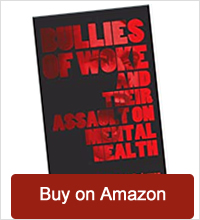Another mass shooting in the USA. Innocent people. Too often students. The President once again addressed a mournful country. “Are we really prepared to say that we’re powerless in the face of such carnage, that the politics are too hard?” And then came the cry for gun control, again.
I am a Canadian and I must admit I don’t completely understand the American attitude toward guns. But blaming guns and guns only for these mass murders makes no sense to me. Why? Because the people who commit these atrocities have shown signs of severe mental illness. And as one living with a mental illness, I fail to understand the lack of rage America has for the lack of resources it provides for mental health care and particularly fighting the social stigma that accompanies it.
Yes, people with guns kill people but I suggest we look at stigma as the trigger for these mass shootings; from the Columbine disaster, to the Colorado theatre massacre, the Sandy Hook horror and now Oregon. Patrick W. Corrigan, psychological scientist at the Illinois Institute of Technology wrote in Psychological Science in the Public Interest, “The prejudice and discrimination of mental illness is as disabling as the illness itself. It undermines people attaining their personal goals and dissuades them from pursuing effective treatments.”
Look at each of the perpetrators involved in these barbaric attacks and you find someone with a severe mental illness who hadn’t been diagnosed, or treated, or was dismissed. Dr. James Alan Fox, a criminologist at Northeastern University has studied and written about mass murderers. “For the purely random attackers, that’s where you find psychotic thinking…The more indiscriminate; the more likely there is serious mental illness.”
Dr. Peter Delany in a 2011 report published by the U.S. Centers for Disease Control and Prevention said “These are real people that have very serious problems…The data should be helping us think through how we want to approach helping them get services that they need.” In all cases, family, friends and sometimes medical people who knew something was wrong but didn’t do anything. Why? My experience as a mental health care advocate tells me it’s stigma.
Stigma affects not only the one dealing with mental illness, but just as importantly family members: parents and siblings; spouses who don’t want to say anything for fear of a negative response from friends, co-workers and employers. We still harbour the fear that someone labeled “mentally ill” will be shunned. Former U.S. First Lady Rosalynn Carter, Rebecca Palpant Shimkets, and Thomas H. Bornemann of the Carter Center Mental Health Program recognized that stigma comes from “widespread, inaccurate, and sensational media depictions that link mental illness with violence.”
In Canada there was a man who got on a bus and then decapitated the passenger beside him. He was diagnosed with having untreated schizophrenia at that time. Frightening. He’d spoken of the voices forcing him to do this. Imagine for a few moments being attacked by terrifying thoughts. Now imagine what it’s like to live with them, all the time. And fight those thoughts-too often alone-for fear of reaching out for help because of the stigma of being labeled “mentally ill.” People screamed for him to be in jail forever.
Doctors say he’s responding well to treatment and as long as he takes his medication he’s low-risk to re-offend as are the vast majority of people with mental illness who receive appropriate care. Ian Hunter, professor emeritus in the Faculty of Law at Western University wrote "Academic studies have shown that the recidivism rate for NCR (not criminally responsible-in America not guilty by reason of insanity) accused is very low, somewhere in the 3-7 per cent range. By comparison, the recidivism rate for parolees is at least double that, while the recidivism rate for those who complete a prison term is more than five times greater." But that hasn’t stopped the fear in the community. And that fear feeds the stigma and frightens people in need fromobtaining the health care that’s available.
"We now have clear evidence that stigma has a toxic effect by preventing people seeking help for mental health problems,” from Graham Thornicroft, a psychiatrist King’s College London. “People reported feeling not only stigmatized by society but branded by their own hand, with a deep sense of personal shame. Other barriers to treatment included a fear of public disclosure as well as that classic self-diagnosis: not crazy.” What is truly disturbing is that Thornicroft’s study revealed 75 percent of Americans and Europeans with mental illnesses don’t receive treatment.
Columbine. 1999.Two boys planned and executed an attack at their high school. I read the reports on these two people. Did no one notice anything “off” about them prior to the attack? Michigan State University psychiatrist Dr. Frank Ochberg and Supervisory Special Agent Dwayne Fuselier, the FBI's lead Columbine investigator and a clinical psychologist, wrote about them after the attack. “Klebold is easier to comprehend, a more familiar type. He was hotheaded, but depressive and suicidal. He blamed himself for his problems.” But Harris “was sweet-faced and well-spoken. Adults, and even some other kids, described him as ‘nice.’ But Harris was cold, calculating, and homicidal.”
The investigators reported:"Klebold was hurting inside while Harris wanted to hurt people." Harris was not merely a troubled kid. They say “he was a psychopath.” They believe “he was irretrievable. He was a brilliant killer without a conscience, searching for the most diabolical scheme imaginable. If he had lived to adulthood and developed his murderous skills for many more years, there is no telling what he could have done. His death at Columbine may have stopped him from doing something even worse.”
The movie “We Need to Talk About Kevin” is an excellent portrayal of someone like Harris. And we need to talk more about the Kevin’s of the world who are different from someone like James Holmes.
James Holmes, the man who shot patrons at a Colorado movie theatre, pleaded not guilty by reason of insanity. His lawyers said he’s schizophrenic and was “in the grips of a psychotic episode” when he carried out the attack on July 20, 2012.
According to the court transcripts Dr. Lynne Fenton, his psychiatrist, said Holmes acknowledged “he was having homicidal thoughts as often as three or four times a day but never let on that he was assembling an arsenal and planning a mass killing.” She described his behavior as “anxious, hostile, bizarre” and so worrisome that she took it upon herself to alert campus police and Holmes' mother. Dr. Fenton also said Holmes may have been worried that she was trying to lock him up. Despite the fact that all of Dr. Fenton’s instincts were on high alert- she felt she couldn’t do anything. "He never met criteria for me to hospitalize him." What does it take to be hospitalized for possible mental illness in America? Did stigma play a role in her actions?
Investigators have found that social stigma against mental health treatment is strongest among youth, men, members of ethnic minorities, and people in the military and health sectors. Sarah Clement, a co-investigator on the King’s College study says that social stigma — rather than mere cost — still impedes progress on improving population health. "Our study clearly demonstrates that mental health stigma plays an important role in preventing people from accessing treatment…We found that the fear of disclosing a mental health condition was a particularly common barrier. Supporting people to talk about their mental health problems, for example through anti-stigma campaigns, may mean they are more likely to seek help.
The devastation at Sandy Hook screams the need for better mental health care. A Yale University professor diagnosed Lanza in 2006 with profound autism spectrum disorder, “with rigidity, isolation, and a lack of comprehension of ordinary social interaction and communications,” while also displaying symptoms of obsessive-compulsive disorder. Both parents knew something was wrong. Peter Lanza said “It was crystal clear something was wrong…The social awkwardness, the uncomfortable anxiety, unable to sleep, stress, unable to concentrate, having a hard time learning, the awkward walk, reduced eye contact. You could see the changes occurring.”
Yet, there were guns in the home. What did his mother not see? Or did she see and fear talking about it? Did stigma keep her quiet or in denial?
Chris Harper-Mercer from Oregon, the most recent mass murderer was described as “always anxious…reclusive and seemingly fragile.” A neighbour said he was “skittish…His demeanour, the way he moved, always looking around. I got a bad vibe from him.” His mother said “My son is dealing with some mental issues…” She commented on the fact that loud noises upset him; from children at play to dogs barking. He wore the same outfit every day. And in 2008 he was discharged from the army after one month. Why? What did they know?
Charles P. O'Brien, a psychiatrist at the University of Pennsylvania, Philadelphia, said the Defense Department has failed to adequately provide mental health care for service members after a long decade of Middle East war. Aside from staffing and other financial shortages, the report author identified an enduring problem with the military's delivery of mental health care: stigma. Did they detect mental illness in this young man?
O’Brien described himself-HIMSELF- as angry and depressed.
Without question he had access to guns. Legally. I’m going to assume that his mother knew he collected fire arms because reports say the two were very close and that she fiercely protected him. Did she suspect? It wasn’t just access to guns that lead to the mass shooting. The access to guns just made it easier to act on his thoughts. It was his mental illness, serious, if not severe, not treated, that triggered the attack.
We need to talk about stigma, I suggest this because so many of these shooters are remembered as “off.” Something not right. Parents: aware. Neighbours: aware. Acquaintances: aware. The perpetrators: aware. The Armed Forces: aware.
Awareness is the first part of the solution to mass murder by people with mental illness. Action is the other. Yes, guns play a role, but stigma seems to be playing a bigger role, preventing too many people from accessing mental health care because of fear. Fear of the derisive remarks, the shunning and lack of empathy. And too often when those with mental illness seek help-too little is available, often too late We, as a compassionate society, must stop the fear of mental illness and increase resources to care for these vulnerable people. If we don’t, then shame on us.


